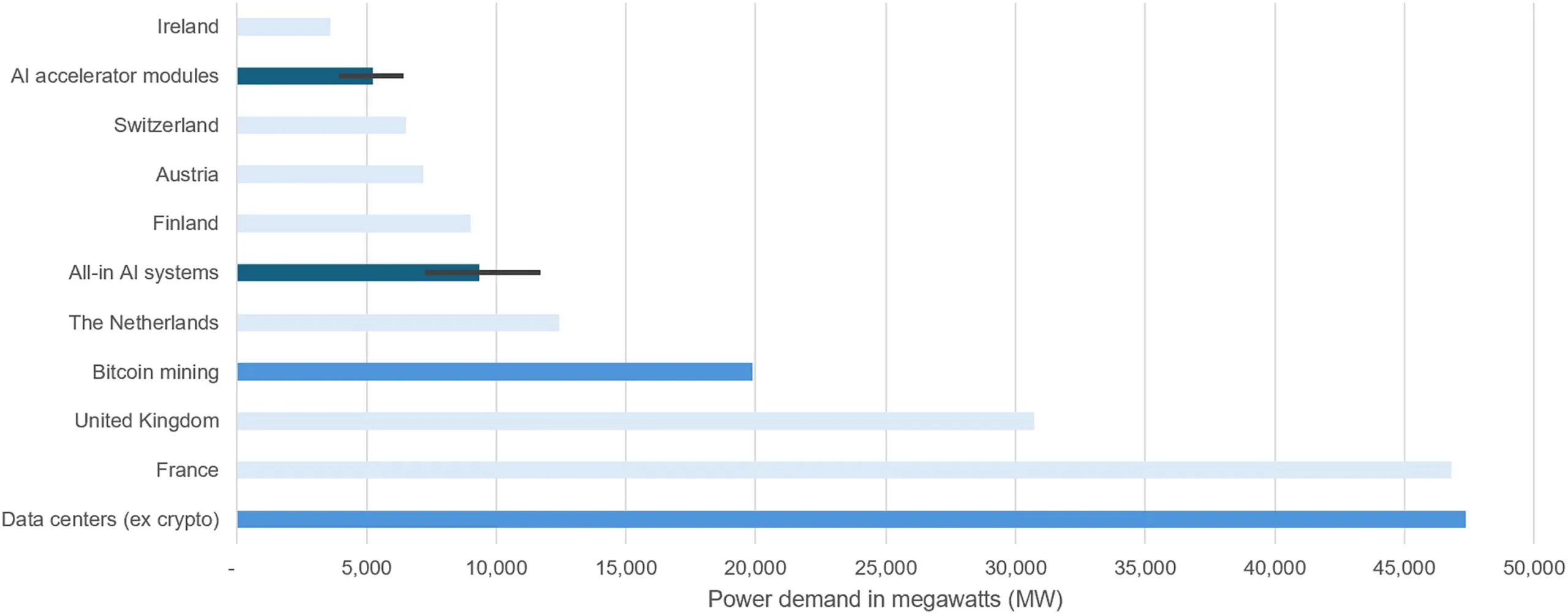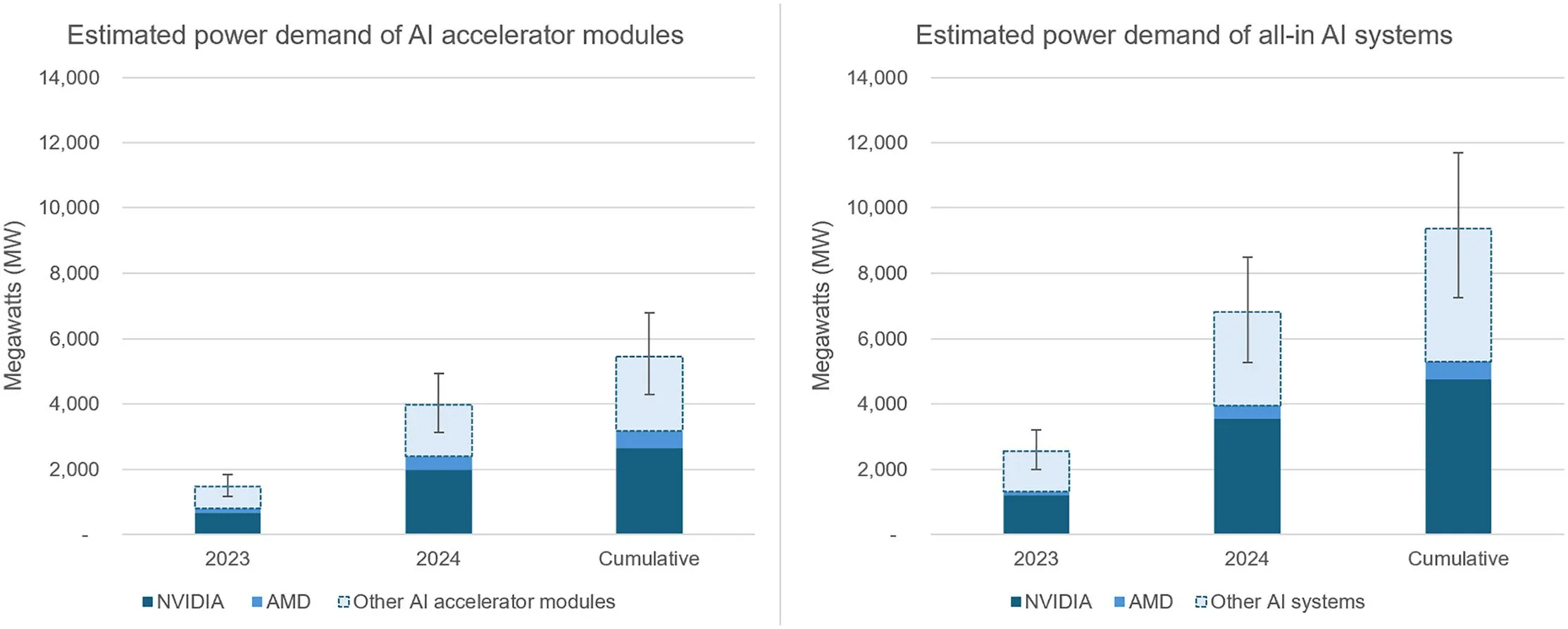Keep in mind when Elon Musk made Bitcoin crash by tweeting that Tesla would cease accepting it attributable to environmental issues, and everybody was frightened concerning the environmental impression of proof-of-work mining? That was in 2021, and degens haven’t forgotten.
But right now, Musk’s xAI is constructing what is likely to be the world’s largest AI supercluster, with governments dashing to create legal guidelines to spice up AI innovation—whereas hardly anybody is questioning the vitality consumption.
A brand new peer-reviewed analysis paper printed within the scientific journal Joule revealed that synthetic intelligence might account for as much as 49% of worldwide knowledge middle electrical energy utilization by the top of 2025—surpassing even Bitcoin’s infamous vitality urge for food.
Alex de Vries-Gao, a PhD candidate at Vrije Universiteit Amsterdam and longtime Bitcoin vitality consumption critic, discovered AI’s energy demand might hit 23 gigawatts by January 1, equal to about 201 terawatt-hours yearly. Bitcoin presently consumes round 176 TWh per yr.

Picture: Joule
“Huge tech corporations are properly conscious of this development, as corporations equivalent to Google even point out having confronted a ‘energy capability disaster’ of their efforts to increase knowledge middle capability,” de Vries-Gao wrote on LinkedIn. “On the identical time, these corporations want to not discuss concerning the numbers concerned.”
“Since ChatGPT kicked off the AI hype, we’ve by no means seen something like this once more,” he added. “Consequently, it stays nearly not possible to achieve perception into the precise vitality consumption of AI.”
Not like Bitcoin’s clear vitality consumption, which anybody can calculate from the community hash price, AI’s energy starvation is intentionally opaque. Firms equivalent to Microsoft and Google reported growing electrical energy consumption and carbon emissions of their 2024 environmental studies, citing AI as the primary driver of this progress. Nonetheless, these corporations solely present metrics for his or her knowledge facilities in complete, with out particularly breaking out AI consumption.
For the reason that tech giants refused to reveal AI-specific vitality knowledge, de Vries-Gao adopted the chips. He tracked Taiwan Semiconductor Manufacturing Firm’s chip packaging capability, since nearly each superior AI chip requires its know-how.
The mathematics, de Vries-Gao defined, works like a enterprise card analogy. If you understand how many playing cards match on a sheet and what number of sheets the printer can deal with, then you may calculate complete manufacturing. De Vries-Gao utilized this logic to semiconductors, analyzing earnings calls the place TSMC executives admitted to “very tight capability” and being unable to “fulfill 100% of what prospects wanted.”
His findings: Nvidia alone used an estimated 44% and 48% of TSMC’s CoWoS capability in 2023 and 2024, respectively. With AMD taking one other slice, these two corporations might produce sufficient AI chips to devour 3.8 GW of energy earlier than even contemplating different producers.

Picture: Joule
De Vries-Gao’s projection confirmed AI hitting 23 GW by finish of 2025, assuming no further manufacturing progress. TSMC has already confirmed plans to double its CoWoS capability once more in 2025.
Energy demand is unlikely to decelerate. Nvidia and AMD introduced report income, whereas OpenAI introduced Stargate, a $500 billion knowledge middle enterprise. Certainly, AI is probably the most worthwhile enterprise within the tech business, with any of the highest three tech corporations on this planet surpassing the whole market capitalization of your complete $3.4 trillion crypto ecosystem.
So the atmosphere will in all probability have to attend.





